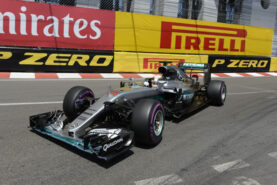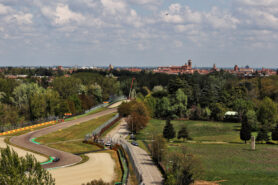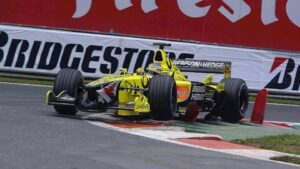Which F1 cars have been the most dominant in history?
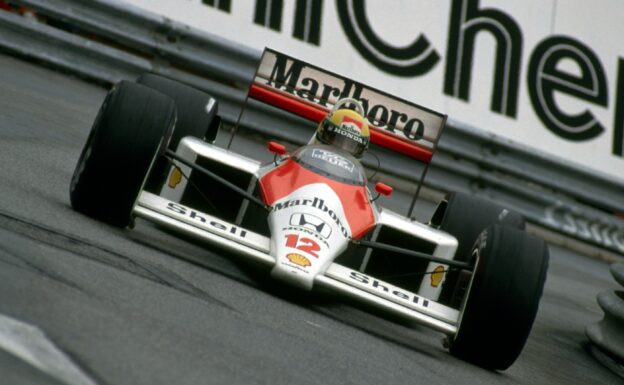
Throughout Formula 1 history, we have seen some spectacular machines that combined with the right driver, dominated the field and went on to win the World Drivers' and World Constructors' Championships in untouchable fashion. Lewis Hamilton and Mercedes had the most dominant seasons in recent years, with the British driver often dominating the WDC by a big margin over the rest of the field, which usually happens when the best driver is behind the wheel of the best car.
With a new era of Formula 1 coming up, regardless of the controversy the sport currently finds itself in, there is an interest to see which teams will be able to find a new gear compared to the rest. Before the major aerodynamic change seen in 2017, the 2014 switch to turbo-hybrid engines saw Mercedes dominate its rivals clearly, but will a team be able to replicate that in 2022? You can bet on one team reaching such a level in the upcoming campaign, and also test your luck with Boom Casino and take matters into your own hands.
Does the best car need the best driver?
When the right driver/car combo arrives, the Formula 1 World Championships can become a one-sided show, but it is simply a testament to the greatness of said driver and the entire team behind him, building the cars. Not every driver who has the best car will dominate a season, and that will certainly open chances for other racers who are more skilled, but anytime one of the legends has been able to sit on dominant machinery, magic has happened on Formula 1 race tracks.
In this article, we want to take a statistical look at some of the greatest cars ever built in Formula 1 and how impressively better they were compared to their challengers. We will give you the two most dominant cars in Formula 1 history. Of course, the table will be decided by using the winning percentage in a single year and not the total of victories, as it is slightly more representative.
Let us take a look at the only two cars which surpassed the 90% winning percentage in a single Formula 1 season.
#2 The Mercedes W07 F1 car
Mercedes dominated Formula 1 mightily from 2014 to 2016, as the championship was clearly decided between its two drivers, Lewis Hamilton and Nico Rosberg, while the rest could only watch from far back.
When aerodynamic changes came in 2017, Mercedes was able to win in 2017 and 2018, but not with such performance dominance throughout the entire season, as the Scuderia Ferrari had arguably a car that was as fast or even faster, given it was slightly more versatile.
However, Mercedes' 2016 challenger, the Mercedes F1 W07 Hybrid, became the second-most dominant car in Formula 1 history after winning 19 of the 21 races of the 2016 calendar. Moreover, the car holds the record for most wins in a single season, although it is clearly a testament to the longer schedule.
The car was also driven to 20 Pole Positions in the 21 races (12 for Hamilton and eight for Rosberg) and it clearly won both the World Drivers' (Rosberg) and the World Constructors' Championship.
The only races which the Mercedes W07 did not win came due to unfortunate situations, as both Mercedes driver crashed into each other in the 2016 Spanish F1 Grand Prix and then Hamilton's engine failure while leading comfortably at Malaysia gave Red Bull another chance at a victory (Rosberg had been spun around by Sebastian Vettel's Ferrari in the opening lap).
The only Pole Position that Mercedes didn't grab that year came at Monaco, where the car simply didn't look as good as the Red Bull, but Hamilton ultimately pulled off the win after a bad pitstop for Red Bull driver Daniel Ricciardo and a long stint with the full-wet tyres from the British champion.
The Chief Designer behind the W07 was John Owen, who remains with Mercedes, while the Technical Director was Paddy Lowe, with Aldo Costa as the Engineering Director.
The car was powered by a 1.6 L hybrid, V6 turbocharged engine with an eight speed gearbox (forward).
#1 McLaren MP4/4
McLaren won three World Drivers' Championships between the 1984 and 1987 F1 season, but all came between 1984 and 1986. While the team dominated in 1984 with Niki Lauda and Alain Prost, its dominance wasn't the same in the following years, with Williams having clearly the fastest car in 1986, but Prost pulling off a tremendous WDC in the final race.
In 1987, McLaren was not as competitive and only won three races with Prost, who finished a distant fourth in the WDC. For the 1988 F1 season, McLaren moved from its TAG-Porsche V6t engine to the dominant Honda V6, which had won the last two WCCs with Williams.
Moreover, Ayrton Senna arrived from Lotus ahead of the 1988 campaign, and McLaren had the greatest driver pairing on the grid and, perhaps, the greatest ever seen in Formula 1.
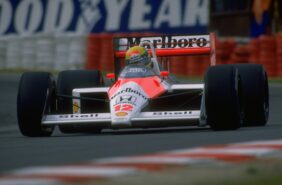
Ayrton Senna racing the McLaren MP4/4 Honda during the Belgian Grand Prix at the Spa circuit in Belgium (1988). Mandatory Credit: Pascal Rondeau/Allsport
The 1988 car was designed by Steve Nichols (as Chief Designer) and Technical Director Gordon Murray (according to some sources). There are several controversies regarding who gets the most credit for the creation of the MP4/4, but egos play a huge part in that one, and we're not going to give it that much thought, because the important part is that the car is the greatest in F1 history, at least in terms of statistics.
The car was exceptionally dominant since the start of the 1988 Formula 1 season and it became quite clear that Senna and Prost would fight for the WDC. In the end, Senna won the first of his three Formula 1 championships at Japan.
Overall, the MP4/4 won 15 of the 16 races in the 1988 Formula 1 calendar, with the only 'loss' coming due to an engine failure in Prost's car and Senna crashing out after an encounter with Jean-Louis Schlesser (a backmarker) while leading the 1988 Italian Grand Prix at Monza (which was an emotional 1-2 for Ferrari, as it came briefly after Enzo Ferrari's death).
It also recorded 15 Pole Positions in 16 races, with Senna taking 13 of those (a record back then for a single season). In terms of wins, Senna took eight (a single-season record back then) and Prost won seven.
Disclaimer:
The opinions expressed are those of the author's and do not necessarily reflect the opinions or views of F1-Fansite.com, staff or partners.
✅ Check out more posts with related topics:


